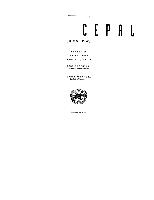Resource information
Land distribution in Latin America is characterized by striking inequality. Notwithstanding the emergence of modern structures in some regions, a few huge land holdings are found alongside a large number of small ones. This situation has long been considered undesirable for reasons of social equity as well as for reasons of efficiency. The topic remains high on the political agenda. The ultimately disappointing results of past redistributive reforms have caused contemporary policy-makers to search for alternatives. In recent years attention has focused on the institution of private property rights and land transactions through market mechanisms. This paper argues that it is extremely helpful to approach the issue from an institutional perspective. The objective here is not to prescribe concrete solutions, but rather to shed light on issues such as how transactions are actually being carried out in the rural setting; the role of transaction costs and of institutions such as property rights; and what influence externalities may have. The theme of this paper is that a meaningful analysis of how rural land markets work cannot be done in a conventional neoclassical framework. The rural economic environment is characterized by imperfect markets, asymmetric information and uncertainty. In addition, economic behaviour is often guided by the intrinsic logic of the peasant farm, which differs markedly from the way in which commercial agriculture operates. No single property rights regime is universally valid. Indeed, a whole array of agricultural institutions has emerged as a response to different and evolving economic parameters. The complexities of rural land markets have to be considered in order to design effective policies. This article hopes to contribute to a deeper understanding of the issues. Thus, after laying the theoretical groundwork, an overview of viable policy instruments is given and a number of case studies are presented.


